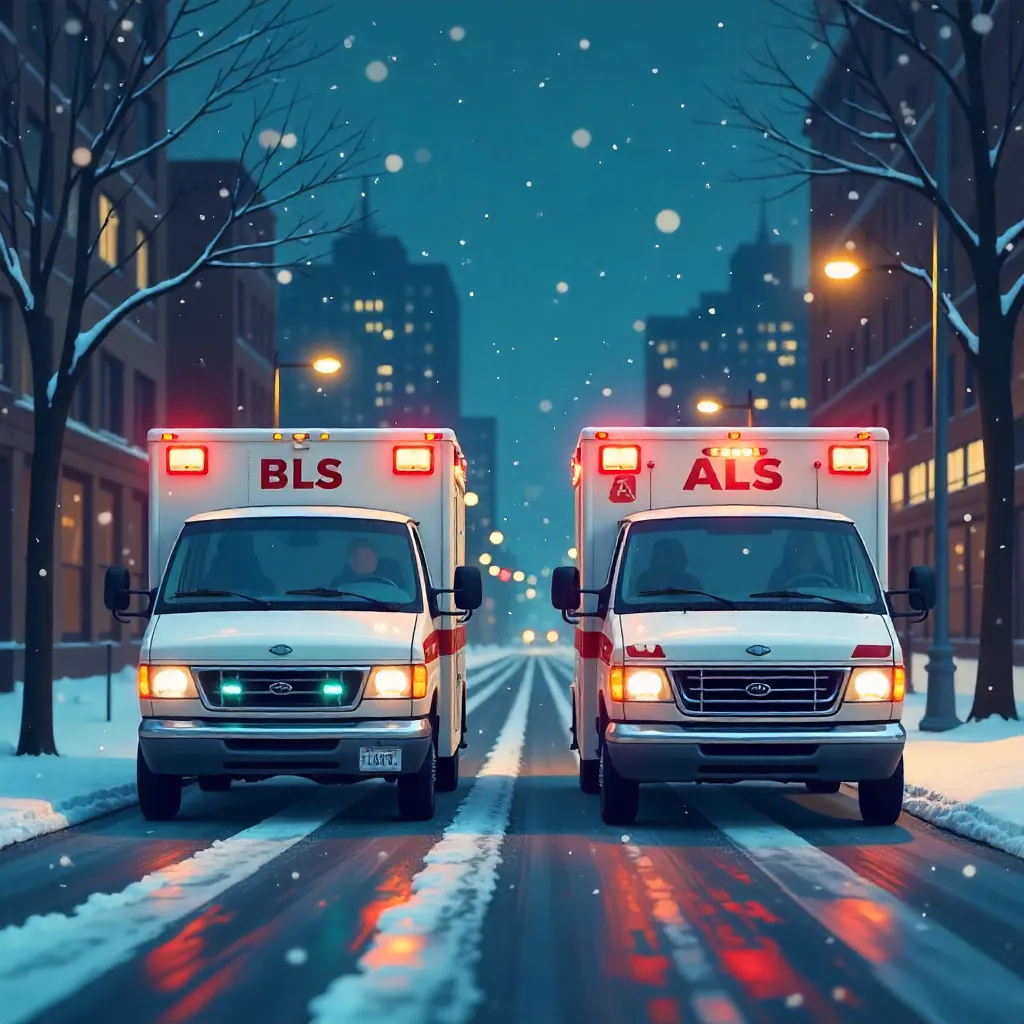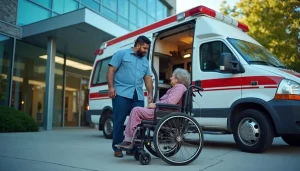What Does Basic Life Support (BLS) Mean?
Basic Life Support (BLS) can also be described as non-invasive mortal emergency care that is usually administered by Emergency Medical Technicians (EMTs). It also includes emergency processes that are crucial in the maintenance of life by ensuring that breathing and circulation is sustained until the patient can reach a hospital or any form of more advanced care providers.
The BLS Services usually consist of:
- Cardio-pulmonary
- Resuscitation (CPR)
- The use of the Automated External Defibrillators (AED)
- Oxygen administration
- Simple airway concept
- Patient monitoring
- Casting of fractured limbs/fractures
- Transport in stable patients
Who Uses BLS?
BLS can be used towards:
- Stable vital signs patients
- Individuals with trivial accidents or ailment
- Medical non-emergency transportation
- Old patients who require examination or follow ups
- Stable but transport-requiring post-surgical patients
An example might include a senior citizen who is recuperating after hip surgery requiring BLS transport to a rehab facility.
What Is ALS (Advanced Life Support)?
The advanced versions of pre-hospital care are the services offered by Paramedics or Advanced EMTs, known as Advance Life Support (ALS). It constitutes invasive treatments and extra measures to deal with emergencies, or life and death matters. Services of ALS usually consist of:
- IV therapy
- Advanced intubation (airway management)
- Monitoring of the heart and interpretation of an ECG
- Use of drugs (e.g. epinephrine, nitro-glycerine)
- Manual machine defibrillation
- Therapy of complicated trauma and cardiac incidents
- Transport conditions of unstable patients
Who Needs ALS?
ALS is suitable to:
- Chest pains or a heart attack patient
- Stroke victims
- Seizure patients
- Lung congestion or inability to breathe
- Severely traumatised or injured patients
- Patients with unstable vitals or change of mentality
Case: An unconscious patient having a heart attack must receive ALS intervention.
BLS vs ALS: How to Decide
The decision will be made based on the illness and the vital signs of the patient and what they are expected to need during the transportation process. Questions to ask:
- Is the patient awake and breathing normally?
- Have they stable vital signs?
- Do they need drugs or IV?
- Does the person have a history of cardiac, respiration or neurological problems?
- Might they become worse in the process of transportation?
In case the answers are stable then BLS can suffice. When there is some instability, the risk of further decline, or the direct need in further advanced care provision, ALS is more secure.
Typical Situations and a Service that Suits You Well
1. Medical Appointments Appointed
Recommended: BLS
Stable patients on follow-ups, imaging, dialysis or corporates on therapy can be easily transported using BLS.
2. Shortness of Breath/Chest pain
Recommended: ALS
The symptoms might signal a pulmonary embolism or a heart attack and require sophisticated follow-ups and medication.
3. Post Operative Patient Transport
Recommended: Depends on condition
When the patient is stable, not on IVs nor on oxygen, BLS is advised. In case of anticipated post-op complications, then ALS is better.
4. Transfers to Nursing Home
Recommended: BLS or ALS
Stable patients who have to come to appointments require BLS. Individuals who have had prior occurrence of seizures, cardiac problems, or risks associated with dementia may need ALS.
5. Accident Emergency Responses
Recommended: The trauma patients in the ALS
Trauma frequently require administration of IV fluids, pain control, and close monitoring on transport.
Advantages of Selecting the Correct Service
There are the following benefits of making the correct choice between BLS and ALS:
· The Introduction of Patient Safety
Individualized care is given to patients that correlate with their clinical status.
· Affordable Transport
In cases where ALS is not required, using BLS will save costs and does not compromise care.
· Improved Allocation of Resources
ALS cottages are also in a reserve capacity against high-priority emergencies.
· Peace of Mind
When a family member or a duty caregiver knows that the patient is under the right hands, then they can ease off their tensions.
How Infina Health Takes the Right Action
At Infina Health, we are concerned about the well-being of our patients and that is why we ensure we assess their needs before directing them to organize a vehicle. The criteria that make BLS or ALS to be assigned by our clinical dispatch team are medical information.
Our Approach entails:
- Pre Transport health screening
- Revision of history of medical issues
- Liaison with hospitals/care providers
- Live update to caregivers
We have made sure every situation is prepared in our ambulances through its equipment and personnel.
Training And Certification: BLS vs ALS Teams
The team of EMTs (BLS Team)
- CPR, AED, oxygen certified
- Training: 120-150hrs
- Put emphasis on non-invasive care to the patients
ALS Team (Paramedics)
- ACLS (Advanced Cardiac Life Support)-Certified PALS
- Training: 1200-1800 hours
- Experienced in EKG, intubation, IV and drugs administration
Technology and Equipment: What Is in the Ambulance?
Features of the BLS Ambulance:
- Stretcher
- AED
- Oxygen tank
- Simple first-aid items
- Suction device
Features of ALS Ambulance:
- ECG monitor
- IV infusion system
- Emergency medicine cabinet
- Invasive airway equipment
- Cardiac defibrillator
In Doubt, Play it Safe
In the event that it is not clear which intervention to use, BLS, or ALS, the safety option is always cautious. A phone call to a provider such as the Infina Health will enable a clinical evaluation prior to transportation.
The medical facilities, families and caregivers should never get the feeling that they must make this decision on their own. Our experts will be willing to direct you.
Final Thoughts
Realizing the distinction between Basic Life Support and Advanced Life Support is one of the keys to safe, successful patient transportation. BLS is applicable to situations where there is stability and routine requirements whereas ALS is more important to critical situations that are urgent and present risks.
Identification of the apt service entails:
- The patient is accorded the right amount of care
- Emergencies in medicine are attended to early enough
- There is responsible use of resources
Our philosophy in Infina Health is to allocate every patient to the best possible level of care. We are ready to assist be it a regular check-up or an emergency issue that threatens a life.





